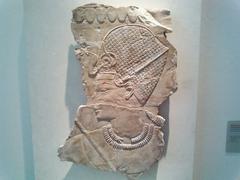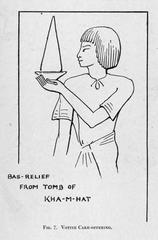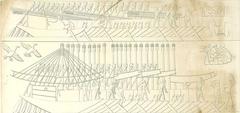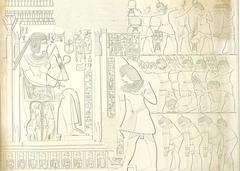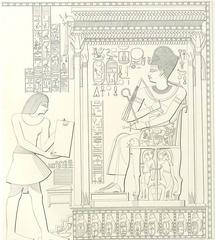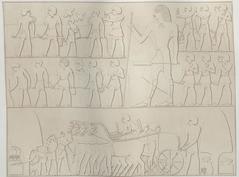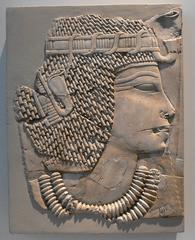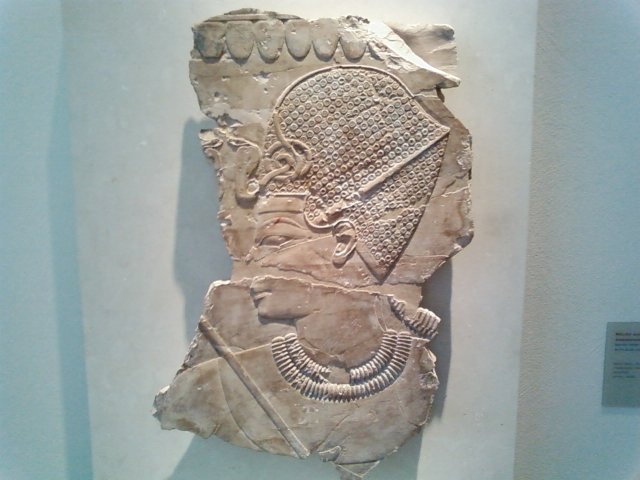
TT57 Tomb of Khaemhat, Luxor Egypt: Visiting Hours, Tickets, and Historical Significance
Date: 15/06/2025
Introduction: The Significance of TT57 in Luxor’s Cultural Heritage
Located amid the storied hillsides of Sheikh Abd el-Qurna within the Theban Necropolis on Luxor’s West Bank, the Tomb of Khaemhat (TT57) offers a remarkable window into Egypt’s New Kingdom and the reign of Amenhotep III (c. 1390–1352 BCE). This private tomb, created for Khaemhat—a distinguished Royal Scribe and Overseer of the Granaries—stands out for its exceptional artistry, detailed depictions of administrative life, and rare insight into the socio-economic workings of ancient Egypt.
TT57’s exquisitely preserved reliefs portray not only religious and funerary rituals but also vibrant scenes of agriculture, market life, and royal ceremony. For travelers seeking to experience Luxor’s archaeological treasures, TT57 provides a unique perspective on the daily realities and beliefs of Egypt’s elite. This guide covers everything you need to know: visiting hours, tickets, accessibility, travel tips, and the tomb’s cultural significance, ensuring a rewarding and informed visit (ETL Travel, Sailing Stone Travel, Against the Compass).
Contents
- About TT57 and Khaemhat
- Visitor Information: Hours, Tickets, Accessibility, and Getting There
- Highlights: What to See Inside TT57
- Practical Tips for Visiting
- Nearby Attractions and Suggested Itineraries
- Frequently Asked Questions (FAQ)
- Conclusion: Experience the Legacy of TT57
- Sources and Further Reading
About TT57 and Khaemhat
Location: Theban Necropolis and Sheikh Abd el-Qurna
TT57 is found in the heart of Sheikh Abd el-Qurna, a section of Luxor’s Theban Necropolis renowned for the tombs of high officials from the New Kingdom. Its strategic hillside placement provided both prestige and a commanding view over the Nile Valley.
Who Was Khaemhat?
Khaemhat was a high-ranking official under Pharaoh Amenhotep III, holding critical titles such as “Royal Scribe” and “Overseer of the Granaries of Upper and Lower Egypt.” His responsibilities in managing Egypt’s vital grain supplies are vividly recorded in the tomb’s agricultural and market scenes, reflecting both his personal wealth and the economic systems of the era.
Artistic and Historical Significance
Unlike many contemporaneous tombs that favor painted plaster, TT57 is celebrated for its masterful limestone reliefs. These works not only illustrate funerary and religious ceremonies but also provide rare depictions of everyday economic activity, market transactions, and even foreign tribute—making TT57 an invaluable resource for Egyptologists and visitors alike (africame.factsanddetails.com). The tomb’s T-shaped layout, intricate iconography, and inscriptions referencing the Sed festival and Amenhotep III’s reign further distinguish it among Theban tombs.
Visitor Information: Planning Your Visit to TT57
Visiting Hours
- General Hours: Open daily from 6:00 AM to 4:00 PM (winter); from 8:00 AM to 5:00 PM in other seasons.
- Tip: Hours may adjust seasonally or during restoration—always confirm locally before your visit (Salt in Our Hair).
Tickets and Entry
- Ticket Purchase: Tickets are sold at the main Tombs of the Nobles ticket office, a short drive from the tombs.
- Prices: Typically 100–150 EGP ($6–$10 USD), granting access to several tombs (selection may rotate for preservation reasons).
- Luxor Pass: For a broader experience, consider the Luxor Pass, which includes most West and East Bank sites, priced from $100–$200 USD (Earth Trekkers).
- Guided Tours: Local agencies and Egyptologist guides offer tours, which are highly recommended for interpreting TT57’s detailed scenes.
Accessibility
- The tomb features uneven terrain, narrow passages, and steps—visitors with mobility challenges should plan ahead. Wheelchair access is not available.
Getting There
- TT57 is easily reached by taxi from central Luxor or as part of a guided tour. For independent visitors, GPS or local drivers are helpful due to limited signage (Sailing Stone Travel).
Photography
- Cellphones: Usually allowed without flash.
- Cameras: Require a photo pass (approx. 300–400 EGP).
- Flash: Strictly prohibited to protect the artwork.
Highlights of TT57: What to See
Agricultural and Market Scenes
TT57’s reliefs vividly document ancient Egyptian agriculture—plowing, harvesting, threshing, and weighing grain—offering an unparalleled visual record of Khaemhat’s official duties. Market and tribute scenes, including foreign envoys, provide further insight into Egypt’s economic reach.
Royal and Religious Imagery
Look for depictions of Khaemhat before Amenhotep III, scenes from the Sed festival, funerary processions, and rituals from the Book of the Dead. Statues and inscriptions reinforce Khaemhat’s close ties to the royal court and his hopes for the afterlife.
Unique Artifacts
Archaeological finds include shawabtis (funerary figurines), a bronze spearhead, and inscribed stelae—all contributing to the tomb’s historical narrative (ETL Travel).
Practical Tips for Visiting
- Plan Ahead: Confirm TT57’s availability on the day of your visit, as tombs may rotate access for conservation.
- Arrive Early: Early morning visits avoid crowds and extreme heat.
- Dress Appropriately: Lightweight, respectful attire and sturdy shoes are essential.
- Bring Water: Facilities are limited near the tombs.
- Guides: Although official guides cannot enter the tombs, their expertise greatly enhances the site experience.
- Respect Preservation: Do not touch the reliefs; follow all photography and preservation rules.
Nearby Attractions and Suggested Itineraries
- Tombs of the Nobles: Nearby tombs such as Ramose (TT55), Userhet (TT56), Rekhmire (TT100), and Sennefer (TT96) each offer unique insights into New Kingdom society.
- Major Sites: The Valley of the Kings, Valley of the Queens, and the Mortuary Temple of Hatshepsut are all easily combined into a full-day itinerary.
- Recent Discoveries: The Dra’ Abu el-Naga necropolis features ongoing archaeological work and new tombs (CNN).
Frequently Asked Questions (FAQ)
Q: What are TT57’s visiting hours?
A: Generally 6:00 AM–4:00 PM in winter, and 8:00 AM–5:00 PM in summer. Check locally for seasonal changes.
Q: How much are tickets?
A: Usually 100–150 EGP ($6–$10 USD) for several tombs, with the Luxor Pass as an optional upgrade.
Q: Is TT57 accessible for wheelchairs?
A: No, due to uneven ground and narrow passages.
Q: Can I photograph inside TT57?
A: Cellphone photography is allowed (no flash). Cameras require a paid permit.
Q: Are guided tours available?
A: Yes, guides are available for the necropolis area, though they cannot enter the tombs themselves.
Conclusion: Experience TT57’s Legacy
The Tomb of Khaemhat is more than a burial site—it is a vivid chronicle of ancient Egypt’s administrative, economic, and spiritual life. Its reliefs, architectural features, and artifacts make TT57 an essential stop for anyone exploring Luxor’s West Bank. By planning your visit with attention to hours, ticketing, and practicalities, you can fully immerse yourself in this extraordinary chapter of Egypt’s history.
For additional information, virtual tours, and expert guidance, consider using the Audiala app and following reputable travel and archaeological platforms.
Sources and Further Reading
- ETL Travel – Khaemhet Tomb Egypt
- Sailing Stone Travel – Touring the Non-Royal Tombs of Luxor
- Against the Compass – Visit Luxor
- africame.factsanddetails.com – Ancient Egypt: Theban Tombs
- Salt in Our Hair – Luxor Egypt Guide
- Earth Trekkers – How to Visit Valley of the Kings
- CNN – Tombs Discovery Luxor Egypt
- Egipto Exclusivo – Luxor
